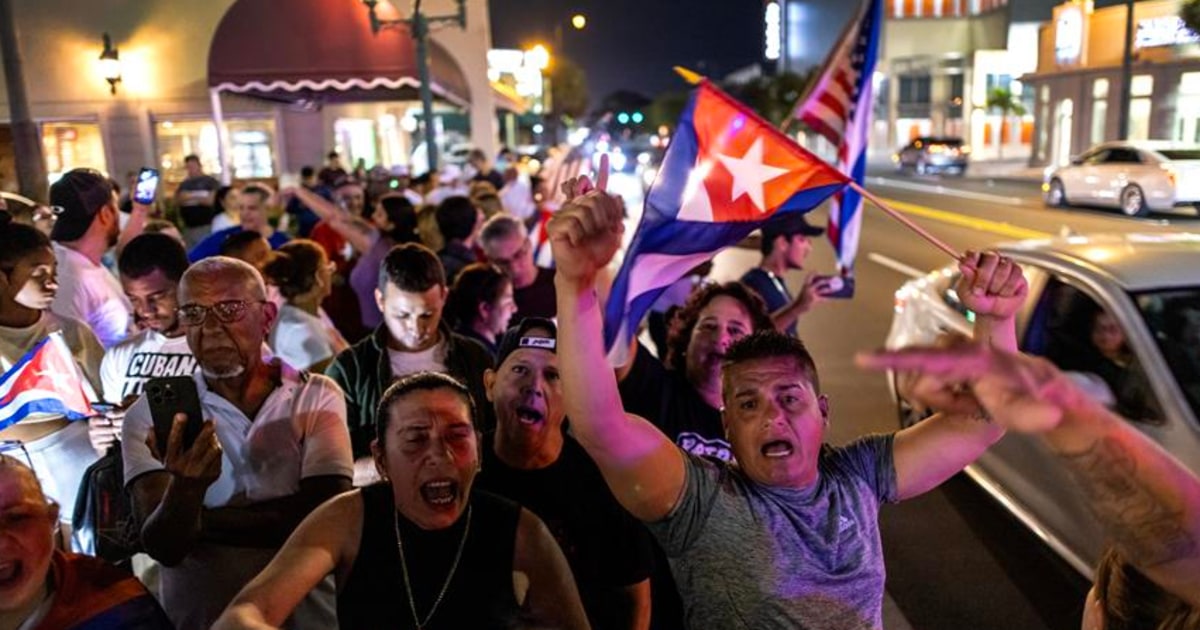On Wednesday,
20 million people lost electricity
due to a fire in some pastures in Pilar that affected three high-voltage transmission lines.
One day after the
"great blackout"
, with a temperature of 37.9°, complaints about a sleepless night, traffic lights that still do not work and neighbors who are still in the dark, questions begin about why a good part of Argentina was left
off
.
The first thing to understand is that
the fire started at 3:30
p.m. and its effect, meters from a high-voltage line, forced
the Atucha I nuclear power plant to be taken out of service,
and that decompensated the Argentine Decompensation System (SADI).
At 3:59 p.m. the sequential disconnection of the three High Voltage lines that link the General Rodríguez Transformer Station with the Litoral was produced, due to short circuits as a result of that field fire.
The blackout
reduced 40 percent of the total electricity supply and left some
6 million homes
without service .
There was chaos in traffic and transport services that depend on electricity, such as the subway, were interrupted.
In San Francisco Solano, Quilmes, most of the users who were still without light after the big blackout on Wednesday were concentrated.
Photo: Luciano Thieberger
The light began to arrive little by little but the darkness in the country lasted three and a half hours.
Instead of focusing on the reason for the cut, the Undersecretary of Electric Power, Santiago Yanotti, tweeted that
"the country had power again
, and that was due to having a system that incorporated technology and resources."
Officially, in the early hours of Thursday, Sergio Berni said that he did not want to "anticipate" and details of the investigation into what caused the fire in those 15 hectares
are still unknown .
By 9 o'clock, on the page of the National Electricity Regulatory Entity (ENRE), between Edenor and Edesur there were 40,000 users without electricity, a number that was maintained at 4:30 p.m. this Thursday.
From Edesur they clarified to
Clarín
that unlike the great blackout, half of the persistent cuts the next day were caused by a
"serious fire" in the Calchaquí de Quilmes substation.
The great blackout on Wednesday occurred at the height of
record consumption
for the Edesur concession area and that agency states that
this consumption was exceeded
this Thursday and that, even so, there was no other massive cut.
In San Francisco Solano, Quilmes, most of the users who were still without light after the big blackout on Wednesday were concentrated.
Photo: Luciano Thieberger
Can it be repeated?
"The Argentine electrical system, as generally happens anywhere in the world, has three parts: generation, power plants, hydroelectric, renewable; wholesale transportation, which are high voltage lines (that's where the problem originated on Wednesday); and retail distribution", explained to
Clarín
Julián Gadano, former Undersecretary of Nuclear Energy of the Nation.
Yesterday there was a problem that in the jargon is said 'unavailability in more than one transport line on the Coast.
It was due to
a "grass fire",
which caused the hot air to raise soot, which is a good electrical conductor, and this raised the alert for a short circuit in the line,
and it disconnected "by itself", for safety.
"The Atucha system
saw a stability in voltage and it also 'went out' automatically.
And for reasons that are still not very well understood, other lines were also disconnected. The blackout occurred due to a very widespread problem on a day
with high demand for energy
due to the high temperatures. The planets aligned for the blackout to occur," he says.
There were
four lines with problems at the same time.
Gadano believes that Cammessa, the Compañía Administradora del Mercado Mayorista Eléctrico Sociedad Anónima, "has to answer why the Cuyo or Santa Cruz line fell, why the problem could not be
isolated
, which I imagine was due to speed with which everything happened".
But mark that these questions yes or yes are linked to the dilemma between
investing so that it does not happen or subsidizing.
"The Argentine energy transmission system,
whose investment the State should take care of
, because the Transener company only deals with the transfer, is quite good if there is no problem, if nothing happens. If you drop a line or a A large generator is a problem. And that happens to us in situations of extreme temperatures, which we have 20 days a year.
Is it worth investing for 20 days?
The systems of the most developed countries have it. They have a
collector
if there is a problem in General Paz", he punctuates.
The investment of which he speaks reaches up to
15 billion dollars.
"That is what is spent per year on
subsidies to Argentina
," she closes.
The worst that could have happened
When there is a blackout, the first fear is whether the television, the refrigerator and, occasionally, the air conditioning, will ever turn on again.
That fear became widespread on Wednesday.
But there was relief.
"Although it sounds unfriendly, the best thing that could have happened to a home or an office is that the power has suddenly been cut off. Because
the worst scenario is to have had micro cuts or very low voltage.
This can burn household appliances such as refrigerators, air conditioners and production machines", says
Clarín
Figuerola, engineer and CEO of Wabee Smart Energy.
For those who have had their supply restored this Thursday, Figuerola recommends
confirming the voltage
.
"It can be measured by consulting an electrician or with monitors that measure in real time, which also allow you to know if and how the supply has returned remotely."
The day after
In the City of Buenos Aires, an entire operation "in the dark"
was activated
, which is the Emergency Master Plan.
From transit to the subway, passing through private buildings, they needed some kind of assistance from Buenos Aires organizations.
The most alarming data is provided by the firefighters: there was a "peak" of procedure in
18 elevators
at the same time in which people were trapped.
By 9 in the morning on Thursday, there were 7,900 lights that were still down in Núñez, Saavedra, Palermo, Floresta, Caballito, Parque Patricios, Belgrano, Parque Chacabuco and Chacarita.
Although in the afternoon it had already been resolved.
Of the 100 traffic lights that were inactive on Wednesday, at crossings that had to be assisted by traffic agents,
18 were still blinking.
Electrodependent people are identified in a specific database and the protocols were activated from the City's Civil Defense.
As for public lighting, there were 16,000 columns without light among the 180,000 existing ones.
The subway, which had the H line suspended due to the blackout,
worked normally on Thursday
amid rumors about its preventive suspension in the event of a blackout again.
Regarding security, the areas of the neighborhoods that were in the dark were mainly patrolled and the police officers assisted in emergency situations reported on the 911 line.
SC
look also
Power outages in Argentina: the map of the areas that are still affected after the blackout
In Quilmes, the day after the big blackout continued with cuts due to a fire in a transformer














/cloudfront-eu-central-1.images.arcpublishing.com/prisa/S7ERVSCT4FUVX6R7TUVBDNTH5Y.jpg)
